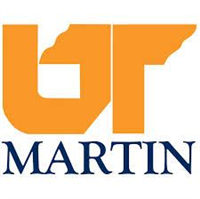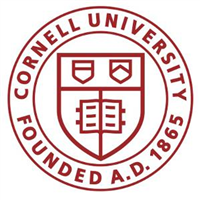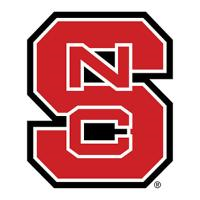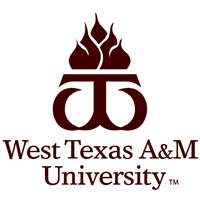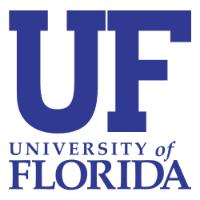What do they do?
Conduct research in breeding, physiology, production, yield, and management of crops and agricultural plants or trees, shrubs, and nursery stock, their growth in soils, and control of pests; or study the chemical, physical, biological, and mineralogical composition of soils as they relate to plant or crop growth. May classify and map soils and investigate effects of alternative practices on soil and crop productivity.
Also known as:
Agronomist, Arboriculture Researcher, Crop Nutrition Scientist, Forage Physiologist, Horticulture Specialist, Microbiology Soil Scientist, Plant Physiologist, Plant Research Geneticist, Research Scientist, Research Soil Scientist, Scientist, Soil Fertility Extension Specialist
-
5.1%
Change
Ranks #36 in job growth rate40Job Openings
Ranks #24 in net job growth
-
The University of Tennessee-Martin
Martin, TN
-
Cornell University
Ithaca, NY
-
North Carolina State University at Raleigh
Raleigh, NC
-
University of Florida
Gainesville, FL
-
Texas A&M University-College Station
College Station, TX
Looking for colleges that offer a specific major? Use the College Match Tool to find your best-matched schools and discover your estimated Net Price!
- Doctorate or Professional Degree (15%)
- Master's degree (25%)
- Bachelor's degree (60%)
- Associate's degree (<1%)
- Some college, no degree (<1%)
- High school diploma equivalent (<1%)
- Less than high school diploma (<1%)
Most Popular Majors that prepare Soil and Plant Scientists
-
#1
-
Degrees Granted
645
-
Female Students
245
-
Male Students
400
-
Median Starting Salary
$45,600
-
-
#2
-
Degrees Granted
537
-
Female Students
284
-
Male Students
253
-
Median Starting Salary
$45,600
-
-
#3
-
Degrees Granted
470
-
Female Students
196
-
Male Students
274
-
Median Starting Salary
$45,600
-
-
#4
-
Degrees Granted
254
-
Female Students
147
-
Male Students
107
-
Median Starting Salary
$42,090
-
-
#5
-
Degrees Granted
242
-
Female Students
136
-
Male Students
106
-
Median Starting Salary
$40,800
-
People in this career often have these skills:
- Reading Comprehension - Understanding written sentences and paragraphs in work-related documents.
- Speaking - Talking to others to convey information effectively.
- Science - Using scientific rules and methods to solve problems.
- Critical Thinking - Using logic and reasoning to identify the strengths and weaknesses of alternative solutions, conclusions, or approaches to problems.
- Active Learning - Understanding the implications of new information for both current and future problem-solving and decision-making.
- Active Listening - Giving full attention to what other people are saying, taking time to understand the points being made, asking questions as appropriate, and not interrupting at inappropriate times.
- Writing - Communicating effectively in writing as appropriate for the needs of the audience.
- Complex Problem Solving - Identifying complex problems and reviewing related information to develop and evaluate options and implement solutions.
- Judgment and Decision Making - Considering the relative costs and benefits of potential actions to choose the most appropriate one.
- Systems Analysis - Determining how a system should work and how changes in conditions, operations, and the environment will affect outcomes.
- Systems Evaluation - Identifying measures or indicators of system performance and the actions needed to improve or correct performance, relative to the goals of the system.
People in this career often know a lot about:
- Biology - Knowledge of plant and animal organisms, their tissues, cells, functions, interdependencies, and interactions with each other and the environment.
- English Language - Knowledge of the structure and content of the English language including the meaning and spelling of words, rules of composition, and grammar.
- Computers and Electronics - Knowledge of circuit boards, processors, chips, electronic equipment, and computer hardware and software, including applications and programming.
- Chemistry - Knowledge of the chemical composition, structure, and properties of substances and of the chemical processes and transformations that they undergo. This includes uses of chemicals and their interactions, danger signs, production techniques, and disposal methods.
- Mathematics - Knowledge of arithmetic, algebra, geometry, calculus, statistics, and their applications.
- Education and Training - Knowledge of principles and methods for curriculum and training design, teaching and instruction for individuals and groups, and the measurement of training effects.
- Geography - Knowledge of principles and methods for describing the features of land, sea, and air masses, including their physical characteristics, locations, interrelationships, and distribution of plant, animal, and human life.
- Communications and Media - Knowledge of media production, communication, and dissemination techniques and methods. This includes alternative ways to inform and entertain via written, oral, and visual media.
People in this career often have talent in:
- Oral Comprehension - The ability to listen to and understand information and ideas presented through spoken words and sentences.
- Written Comprehension - The ability to read and understand information and ideas presented in writing.
- Oral Expression - The ability to communicate information and ideas in speaking so others will understand.
- Written Expression - The ability to communicate information and ideas in writing so others will understand.
- Deductive Reasoning - The ability to apply general rules to specific problems to produce answers that make sense.
- Inductive Reasoning - The ability to combine pieces of information to form general rules or conclusions (includes finding a relationship among seemingly unrelated events).
- Information Ordering - The ability to arrange things or actions in a certain order or pattern according to a specific rule or set of rules (e.g., patterns of numbers, letters, words, pictures, mathematical operations).
- Category Flexibility - The ability to generate or use different sets of rules for combining or grouping things in different ways.
- Originality - The ability to come up with unusual or clever ideas about a given topic or situation, or to develop creative ways to solve a problem.
- Problem Sensitivity - The ability to tell when something is wrong or is likely to go wrong. It does not involve solving the problem, only recognizing that there is a problem.
- Near Vision - The ability to see details at close range (within a few feet of the observer).
- Speech Clarity - The ability to speak clearly so others can understand you.
- Fluency of Ideas - The ability to come up with a number of ideas about a topic (the number of ideas is important, not their quality, correctness, or creativity).
- Flexibility of Closure - The ability to identify or detect a known pattern (a figure, object, word, or sound) that is hidden in other distracting material.
- Speech Recognition - The ability to identify and understand the speech of another person.
People in this career often do these activities:
- Prepare scientific or technical reports or presentations.
- Develop sustainable industrial or development methods.
- Advise others about land management or conservation.
- Research sustainable agricultural processes or practices.
- Research hydrologic features or processes.
- Research crop management methods.
- Conduct climatological research.
- Analyze environmental data.
- Plan natural resources conservation or restoration programs.
- Develop agricultural methods.
- Research geological features or processes.
- Collaborate with technical specialists to resolve design or development problems.
- Analyze biological samples.
- Survey land or properties.
- Develop environmental sustainability plans or projects.
- Direct natural resources management or conservation programs.
- Conduct research of processes in natural or industrial ecosystems.
- Research impacts of environmental conservation initiatives.
- Research diseases or parasites.
- Classify organisms based on their characteristics or behavior.
- Advise others about environmental management or conservation.
This page includes data from:

 Occupation statistics: USDOL U.S. Bureau of Labor Statistics Occupational Employment Statistics
Occupation statistics: USDOL U.S. Bureau of Labor Statistics Occupational Employment Statistics
 Videos: CareerOneStop, USDOL/ETA and the Minnesota Department of Employment & Economic Development
Videos: CareerOneStop, USDOL/ETA and the Minnesota Department of Employment & Economic Development


